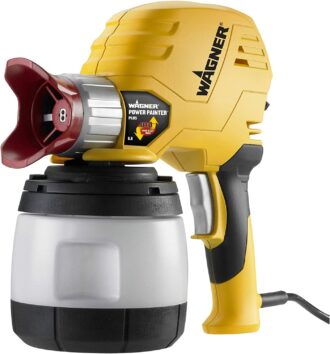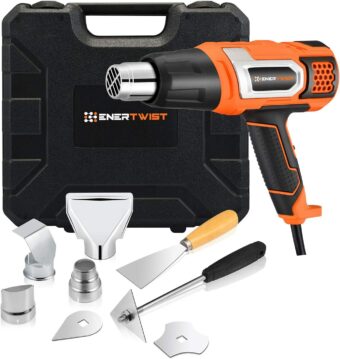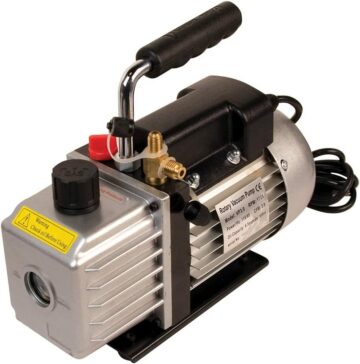There are different kinds of drills that builders use for different tasks. Whether you’re a professional woodworker, metal worker, builder, or even a professional homeowner, you’ve probably used a certain type of drill at some point.
In its most basic form, it is a tool that makes a hole by quickly turning a bit. The whole point of it is to make holes in things like wood, plastic, metal, concrete, bricks, masonry, and so on.
It just spins a sharp bit at a very fast rate. The main parts of a power drill are a brushed or brushless motor and a chuck. The chuck is meant to hold a sharp bit while the motor turns the chuck and bit, which makes a hole in the material it is in contact with.
A drill can do more than just make holes. It can also be used to drive screws and turn nuts and bolts, among other things. When it is used in this way, it is called a driver. Because it can do both of these things, it is called a drill driver in its most basic form.
Most of the time, when we think of drills, we think of ones with electric motors. But there are also hand-powered ones that are used for different crafts.
Table of Contents
Different Types of Drills for Construction and DIY Projects
In this article, I’ve listed and explained every type of drill out there, as well as what it can be used for, so that you can choose the right one for your craft.
Drill with a pistol grip
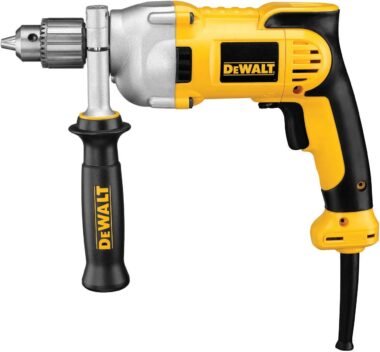
The basic pistol-grip drill driver is the most common handheld tool for making holes and driving fasteners. Most craftsmen have one in their hands or in their toolboxes. You might already have one of these.
Most of the time, it is used to make small holes for screws so that they don’t split the wood when they are driven in.
In addition to making pilot holes, they are also used to drive and set screws. Some of these come with a clutch that lets the user control how much torque is sent to the bit. This keeps the bit from stripping the screw head or damaging it.
The basic pistol-grip power drill will work fine for basic tasks like drilling holes and driving screws into wood, plastic, and other similar materials.
Hammer drill

Some materials, like concrete, stone, or masonry, are very hard, so using a regular power drill to drive a bit into them is like trying to get water with a spoon. It just doesn’t work.
So, hammer drills were made. Unlike most pistol-grip drills, they have a hammering mechanism that is controlled by a clutch. This makes the chuck move quickly forward and backward as the bit turns.
This gives it more power and makes it easier to use on things like concrete and other masonry materials that are harder than wood.
Rotational Hammer
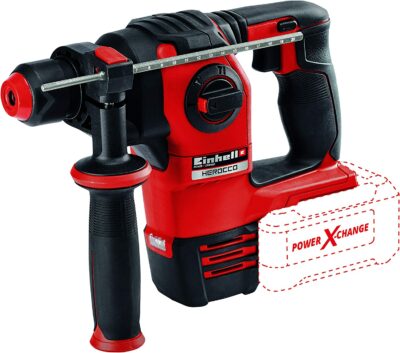
A rotary hammer is like an oversized hammer drill. That’s because it does the same thing as hammering or pushing the bit in and out of the hole you’re making, but with much more force. It’s even bigger and heavier than before.
The rotary hammer doesn’t have a clutch like a regular hammer drill. Instead, it uses a piston to deliver a stronger hammering blow. This makes it better for driving bits into harder materials and making bigger holes.
Even small jackhammers can be made out of rotary hammers. You can just attach a chisel bit and set it to only hammer, and then you can use it to cut through hard concrete, bricks, and other materials.
Is a rotary hammer something you need? Well, you probably don’t need one of these if you’re a simple homeowner who only does simple DIY projects at home. You can do it with a simple drill driver, or you can get a simple hammer drill if you want to take on tougher projects.
On the other hand, if you sometimes work with hard concrete or masonry, a simple drill driver with a hammer won’t be enough. If you have a rotary hammer, your job will be a lot easier.
Cause of Effect
These are more like drivers than traditional drills. Impact drivers and wrenches, like hammer drills, can also be used to hammer. But the hammering doesn’t happen in a straight line. Instead, it happens in the direction of the drill’s rotation, which gives it a much stronger turning force.
Impact drivers are often used in auto repair shops and metal shops to turn and loosen fasteners like lug nuts and bolts that are stuck. They are also used to drive fasteners into hard composite materials by builders and construction workers.
If a regular drill driver can’t get it to spin, an impact driver can do it in no time.
The type of chuck that comes with an impact driver is one thing that makes it different from a regular power drill.
In contrast, an impact driver’s chuck is a smaller hexagonal collet that can’t hold regular bits. The hexagonal collection is more compact and can fit into smaller spaces because it is smaller.
The only bad thing about impact drivers is that most of them don’t have a variable speed setting like regular handheld power drills. They have a fixed torque and speed, so they are not good for work that needs to be done carefully.
Core drill
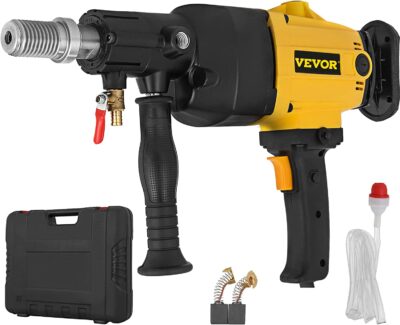
The main purpose of core drills is to make big holes in things like reinforced concrete, marble, bricks, and other masonry materials. They are very powerful drills that are sometimes used with a shaft or rig to keep them steady as they cut through the material.
It’s basically just a big, powerful motor connected to a circular bit that cuts through the material as a hole saw. The core drill is sometimes used with a shaft or as part of a rig to make it more stable and accurate.
Drill Press
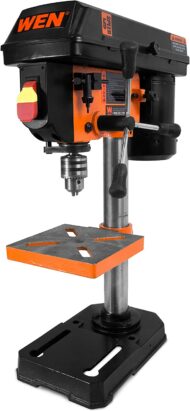
This is more like a power drill that is mounted on a table or bolted to the floor and has a worktable that lets you secure or clamps the piece you’re working on.
Unlike a hand-held power drill, it is a stationary piece of equipment, so you have to bring the workpiece to the tool.
It is better than a hand-held power drill in several ways. First of all, it makes sure that the results are correct and consistent. The spindle is at a 90-degree angle to the table, which is right across from it. That means the bit won’t bend as it goes into the workpiece. Instead, it will always make a straight 90-degree hole.
When making a hole with a hand-held drill, there is always a chance of a slight bend or mistake.
Also, you don’t have to work as hard to push the spinning bit into the material. With a hand-held drill, the bit has to be pushed into the material.
With a drill press, on the other hand, all you have to do is use a hand lever to lower the chuck and spindle. This is all connected by a rack and pinion gear, which gives you more mechanical advantage and less work to do.
Drill at a Right Angle

Right-angle drills are just like regular handheld power drills, but instead of a pistol grip handle, the chuck is at right angles or 90 degrees to hold.
These are made to fit in tight places where a regular power drill won’t work, such as between studs and joists, inside cabinets, and so on.
As a homeowner, you probably wouldn’t use one of these to make holes very often. But as a woodworker for a living, they come in very handy.
Drill Studs and Joists
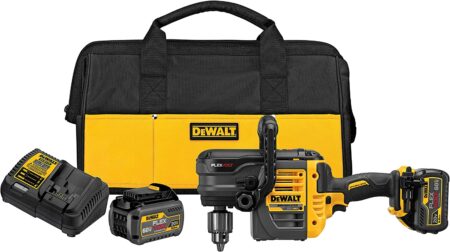
These are special kinds of right-angle drills that are made to cut holes in studs and joists while building a house.
They are much bigger, heavier, and stronger than a normal 90-degree drill. Because of how they are made, they fit easily between studs and joists.
If you’re an electrician, plumber, handyman, or framer, you’ll find it very useful for cutting holes where electrical and water pipes go through.
